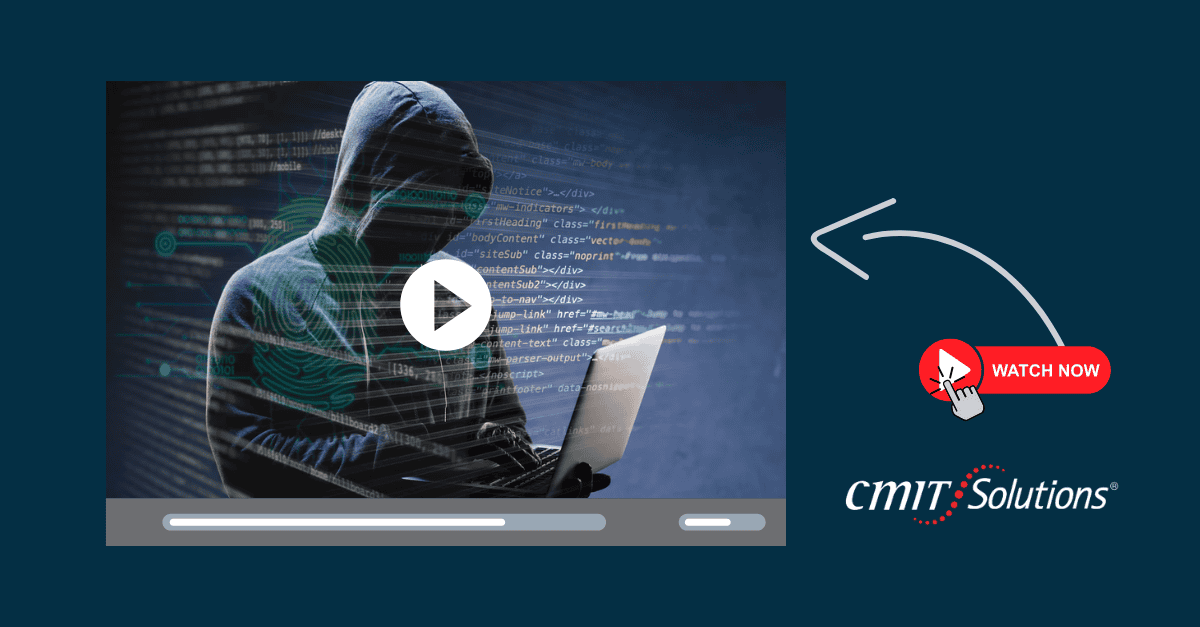Phishing email scams have become a major headache for organizational cybersecurity, cleverly slipping past usual security measures by playing on human vulnerabilities. The Human Resources (HR) and Information Technology (IT) departments, which hold a lot of sensitive employee and system information, are especially at risk. These scams threaten not just the privacy and accuracy of company data, but also make it tough to keep our digital spaces secure and reliable. Getting a grip on how these scams work can really help strengthen our defenses and lower the risks.
The Rise of HR and IT Phishing Scams
Statistics and Trends
A 2023 study by IBM Global Security identifies phishing as the primary cause of corporate data breaches, underscoring the costly nature of these cyberattacks. Research from SlashNext reveals a 61% increase in phishing attacks in 2022 compared to the previous year, highlighting a significant rise in such threats. KnowBe4’s study in the second quarter of 2023 reports that nearly one in three email users are likely to click on a suspicious link or comply with a fraudulent request, indicating a high success rate for these scams.
Why HR and IT Departments are Targeted
HR and IT departments handle sensitive employee and system data, making them prime targets for phishing scams. Cybercriminals use HR-related subject lines, such as updates on vacation policies or performance reviews, to create emails that appear legitimate and urgent. The emotional impact of HR communications leads employees to perceive these as trustworthy, increasing the likelihood of falling for phishing attempts. Internal communication channels in HR departments are crucial for sharing timely alerts about phishing tactics and reinforcing security measures.
For more information on how CMIT Boston, Newton, Waltham can help protect your business from phishing attacks, visit our Managed IT Services.
Common Tactics Used in Phishing Scams
Types of Phishing Emails
Phishing scams come in various forms, each designed to deceive victims in different ways:
- Spear Phishing: Targets specific individuals or organizations using detailed information which makes the emails appear legitimate and urgent.
- Whaling: Aims at high-ranking officials like CEOs, using highly sophisticated email content that often discusses sensitive corporate information.
- Vishing: Involves voice calls instead of emails, where attackers pose as legitimate authorities to extract personal or corporate information.
- Smishing: Uses SMS or text messages to deliver phishing attacks, often embedding malicious links or phone numbers to trick the recipient.
- Email Phishing: The most common form, where attackers send emails pretending to be from reputable sources to steal user data.
Examples of HR and IT Phishing Scams
Phishing tactics targeting HR and IT departments can be particularly harmful. Here are some common examples:
- Open Enrollment Scams: Attackers use the guise of open enrollment to trick employees into providing personal information or clicking on malicious links.
- Fake Job Listings: Often posted to collect personal data from applicants or to install malware when they attempt to apply.
- W-2 Phishing: Targets employee tax information by masquerading as urgent tax communications.
- Travel and Expense Report Frauds: Employees receive phishing emails about supposed problems with travel bookings or expense submissions, urging them to click on harmful links.
- Payroll Updates: Scammers send fake payroll or bonus updates to employees, prompting them to input confidential information on spoofed websites.
To learn more about phishing protection, visit our page on Cybersecurity.
Impact on Organizations and Employees
Financial and Security Risks
Phishing attacks can result in substantial financial damage and security risks:
- Direct Financial Losses: Phishing attacks often result in substantial financial damage. For instance, the FBI’s Internet Crime Complaint Center reported that in 2019, such attacks led to losses totaling $1.7 billion for organizations. This includes unauthorized transactions and direct theft of funds, as highlighted by incidents of “CEO fraud” where attackers impersonate executives to solicit urgent wire transfers.
- Operational Disruptions: Beyond immediate financial implications, phishing can disrupt business operations. The installation of malware or ransomware following a breach can lead to significant system outages, affecting productivity and incurring additional costs for recovery and mitigation.
- Regulatory Penalties: Legal consequences are also a critical concern. Businesses found non-compliant with data protection regulations due to breaches can face hefty fines.
The consequences of falling prey to phishing can extend beyond immediate financial losses, impacting the long-term stability and reputation of the organization. Learn more about protecting your business from phishing at Keep Your Business Protected From Cyber Threats.
Preventive Measures and Best Practices
Employee Training
Employee training is crucial in the fight against phishing. Regular and comprehensive training programs can help employees recognize phishing attempts and respond appropriately:
- Regular Training Sessions: It is essential for employees to undergo regular training to recognize phishing scams. This training should include identifying signs like unusual requests and urgent language, which are typical of phishing attempts.
- Simulated Phishing Attacks: Implement simulated phishing tests to provide employees with real-life scenarios. Analyze the results to identify vulnerabilities and improve training programs.
- Continuous Learning: Encourage ongoing education by updating staff regularly on new phishing techniques and cybersecurity threats. This helps maintain high levels of awareness and preparedness.
For more information on training programs and cybersecurity solutions, visit Managed IT for Financial Institutions.
Technical Safeguards
Implementing technical safeguards can significantly enhance an organization’s defenses against phishing attacks:
- Strong Password Policies: Require employees to use strong, unique passwords for each account to enhance security.
- Multifactor Authentication: Implement multifactor authentication to add an extra layer of security, making it harder for attackers to gain unauthorized access.
- Regular Software Updates: Ensure that all business software is up-to-date with the latest security patches and updates to protect against vulnerabilities.
Technical safeguards are essential for creating a secure digital environment. Learn more about these measures at IT Guidance.
Ongoing Monitoring and Response
Active monitoring and a solid response plan are critical components of an effective cybersecurity strategy:
- Active Monitoring Systems: Utilize anti-phishing software and other security tools to monitor and detect potential phishing attempts in real-time.
- Incident Response Plan: Develop a comprehensive incident response plan that includes immediate actions employees should take if they suspect a phishing attack.
- Encourage Reporting: Foster a positive security culture where employees feel safe to report any suspicious activities without fear of repercussions. This approach helps in early detection and response to security threats.
For more details on setting up monitoring systems and response plans, visit IT Support.
Regular Security Audits
Conducting regular security audits can help identify vulnerabilities and ensure that all security measures are up to date:
- Internal Audits: Regular internal audits can help assess the effectiveness of current security measures and identify areas for improvement.
- External Audits: Hiring external experts to conduct security audits can provide an objective assessment of your organization’s cybersecurity posture.
Learn more about security audits and how they can benefit your organization at Network Management.
Secure Communication Channels
Maintaining secure communication channels within the organization can help prevent phishing attacks:
- Encrypted Email Systems: Use encrypted email systems to protect sensitive information from being intercepted by cybercriminals.
- Secure Messaging Platforms: Utilize secure messaging platforms for internal communications to ensure that sensitive information is shared safely.
For more information on secure communication solutions, visit Unified Communications.
Incident Response and Recovery
Having a robust incident response and recovery plan in place can help mitigate the damage caused by phishing attacks:
- Immediate Response: Develop protocols for immediate response to phishing incidents, including isolating affected systems and notifying relevant parties.
- Data Recovery: Ensure that data recovery plans are in place to restore lost or compromised information quickly and effectively.
For more details on incident response and recovery plans, visit Data Backup.
Compliance and Legal Considerations
Staying compliant with data protection regulations is essential for avoiding legal penalties and maintaining customer trust:
- GDPR Compliance: Ensure that your organization complies with GDPR and other relevant data protection regulations.
- Legal Counsel: Seek legal counsel to understand the implications of phishing attacks and develop strategies for compliance and risk management.
Learn more about compliance and legal considerations at Compliance.
Partnering with Experts
Partnering with cybersecurity experts can provide your organization with the necessary resources and expertise to combat phishing threats:
- Managed Security Service Providers (MSSPs): Working with an MSSP can provide comprehensive security solutions, including continuous monitoring, advanced technology, and employee training.
- Consultants: Hiring cybersecurity consultants can offer specialized knowledge and insights to enhance your organization’s security posture.
For more information on partnering with cybersecurity experts, visit IT Procurement.
Conclusion
In today’s digital landscape, phishing email scams are a persistent threat, particularly targeting HR and IT departments. These scams exploit human vulnerabilities, leading to significant financial, legal, and reputational damage. Understanding the tactics used in phishing scams and implementing robust preventive measures are essential for protecting your organization.
By focusing on employee training, technical safeguards, ongoing monitoring, and partnering with cybersecurity experts, CMIT Boston, Newton, Waltham can help your organization build a resilient defense against phishing attacks. A comprehensive and proactive approach to cybersecurity is crucial for safeguarding both the digital and human elements of your organization.
For more information on how CMIT Boston, Newton, Waltham can help keep your workplace safe from cybersecurity risks, visit our website. Let us help you build a secure and resilient digital workplace, ensuring your company’s integrity and individuals’ privacy remain protected in the face of evolving cyber threats.






